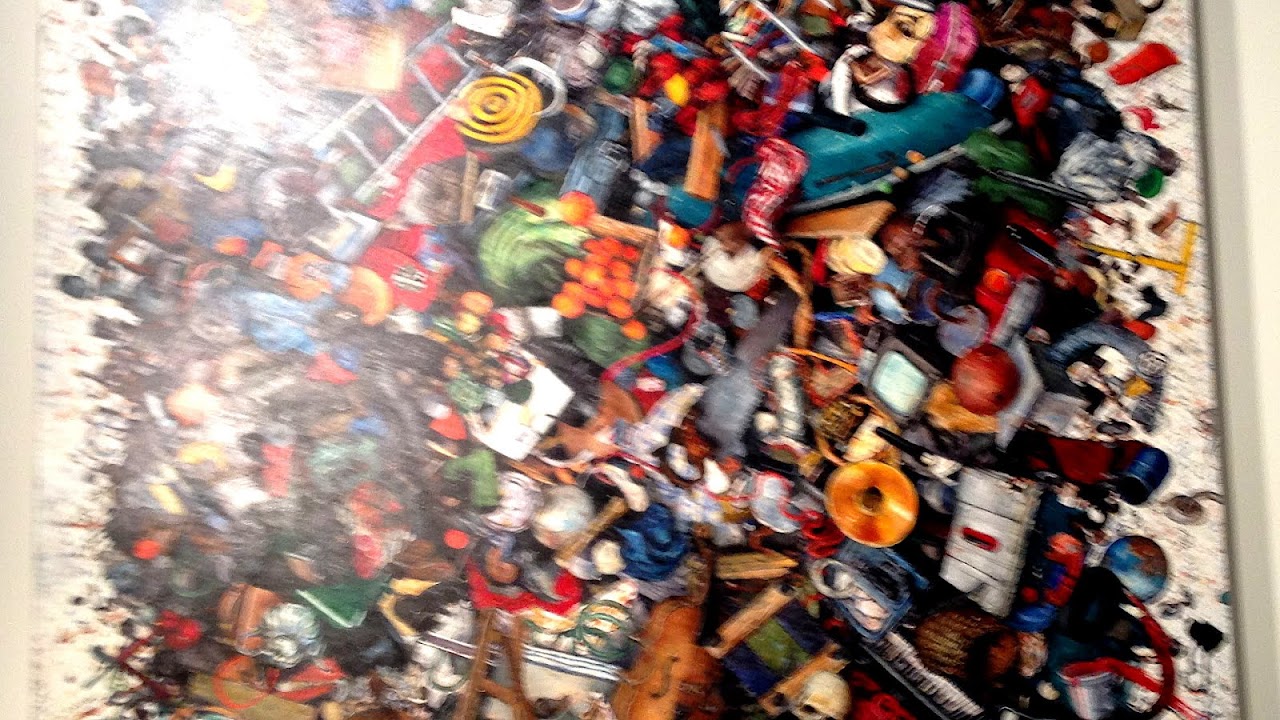
The Corcoran Gallery of Art was an art museum in Washington, D.C. Prior to its closing, it was one of the oldest privately supported cultural institutions in the United States capital. Starting in 1890, a museum school, later known as the Corcoran College of Art + Design, co-existed with the gallery. The museum's main focus was American art. In 2014, after decades of financial problems, the Corcoran entered into an agreement with the National Gallery of Art (NGA) and the George Washington University whereby almost all of the gallery's 17,000 work collection was placed under the care of the NGA, while the school and historic 17th street gallery building continued operations as a part of the George Washington University's new Corcoran School of the Arts and Design.

Maps, Directions, and Place Reviews
Founding
When the gallery was founded in 1869 by William Wilson Corcoran, the co-founder of Riggs Bank, it was one of the first fine art galleries in the country. Corcoran established the gallery, supported with an endowment, "for the perpetual establishment and encouragement of the Fine Arts." While an independent institution, the Corcoran was the oldest and largest non-federal art museum in the District of Columbia. Its mission was "dedicated to art and used solely for the purpose of encouraging the American genius."
The Corcoran Gallery of Art was originally located at 17th Street and Pennsylvania Avenue, in the building that now houses the Renwick Gallery. Construction of that building started before the Civil War. The building, near completion, was used by the government as a warehouse during the Civil War. It was finally completed in 1874 and the gallery opened to the public.
By 1897, the Corcoran Gallery collection outgrew the space of its original building. A new building was constructed, designed by Ernest Flagg in a Beaux-Arts style. The 135,000 square feet (12,500 m²) building was built to house an expanded Corcoran collection in addition to the nascent school, which had been formally founded in 1890.
Art Museums In Dc Area Video
Years of Growth
In 1928, the art collection of former Senator William A. Clark joined the Corcoran in a new wing designed by Charles Adam Platt, and inaugurated by President Calvin Coolidge. For decades, the Corcoran examined the possibility of adding on a final wing which would complete the campus footprint. These plans abruptly ended in 2005 after a Frank O. Gehry -designed wing was scrapped due to lack of funding, and the remainder of the available property was sold to a private developer.
Throughout the 1950s, 1960s, and 1970s, the gallery continued to display its main collection from Corcoran, Clark, and a few select major donors. At its peak, the museum owned a significant collection including work from Rembrandt Peale, Eugène Delacroix, Edgar Degas, Thomas Gainsborough, John Singer Sargent, Claude Monet, Pablo Picasso, Edward Hopper, Willem de Kooning, Joan Mitchell, Gene Davis, and many others. Space was always a challenge - only a small percentage of the gallery's permanent collection was able to be displayed in the confines of the 17th street gallery, which shared its roughly 140,000 square feet with the art school.

Mapplethorpe scandal
In 1989, the Corcoran Gallery of Art had agreed to host a traveling solo exhibit of Robert Mapplethorpe's works. Mapplethorpe decided to show a new series that he had explored shortly before his death, Robert Mapplethorpe: The Perfect Moment curated by Janet Kardon of the Institute of Contemporary Art. Several Trustees of the Corcoran and U.S. Representatives Dick Armey (TX) and Jesse Helms (NC ) were horrified when the works were revealed to them, and the museum director, Christina Orr-Cahall succumbed to pressure and cancelled the exhibit, which had already been announced to its members through an exhibition preview invitation. The Coalition of Washington Artists organized a demonstration to protest the Corcoran Gallery's cancellation of the exhibit. An estimated 700 people attended the demonstration.
In June 1989, pop artist Lowell Blair Nesbitt became involved with a scandal involving Mapplethorpe's work. It was at this time that Nesbitt, a long-time friend of Mapplethorpe, revealed that he had a $1.5 million bequest to the museum in his will. Nesbitt publicly promised that if the museum refused to host the exhibition he would revoke his bequest. The Corcoran refused and Nesbitt bequeathed the money to the Phillips Collection instead.
After the Corcoran cancelled the Mapplethorpe exhibition, the underwriters of the exhibition went to the nonprofit Washington Project for the Arts, which showed the controversial images in its own space from July 21 to August 13, 1989, to large crowds. The 1990 NEA Appropriations Bill included language against "obscene" work.
As a result of the scandal, more than a dozen artists canceled exhibitions while the director, Christina Orr-Cahall, resigned and moved to the Norton Museum of Art.

Final years
In its final years, the museum and its affiliated art and design college Corcoran College of Art and Design together had a staff of about 140 and an operating budget of about $24 million. Revenue came from grants and contributions, admissions fees, tuition, membership dues, gift shop and restaurant sales, and an endowment worth around $30 million. In February 2001, two AOL executives (Robert W. Pittman and Barry Schuler) and their wives donated $30 million to the museum, its largest single donation since its founding.
In 2014, following decades of financial problems, the Corcoran Trustees chose to break the founder's deed of trust by going to court to have the Corcoran dissolved. Following a court order dissolving the city's oldest independent museum, the trustees gave the former college of art and design, the $200 million Beaux Arts building, and $50 million to George Washington University to renovate the facility and operate the school programs. The 17,000 piece art collection worth $2 billion was donated to the National Gallery of Art.
Source of the article : Wikipedia


EmoticonEmoticon